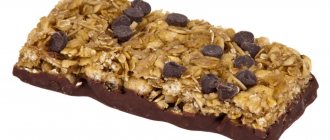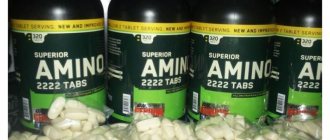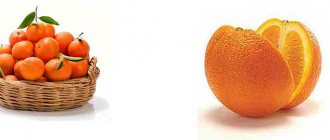Both athletes and scientists have always been interested in the issue of nutrition, namely, what to eat and at what time in relation to training. The topic of food and training, or more specifically, the importance of timing of food consumption in relation to training and the “best” time to eat, is the most frequently discussed. What about the “worst” time to consume food?
For many years, nutrition experts have advocated the idea that we consume our bulk of calories during the day, mostly at breakfast, and consume as few calories as possible in the evening. If your goal was to lose weight, gain or maintain slimness, then consuming carbohydrates during evening meals and night snacks was especially “prohibited”. Recently, as a concept known as "carbohydrate fasting" gained popularity, the opposite has become accepted as the right thing to do. In short, the concept involves consuming the most calories and carbohydrates in the evening.
All these theories exist at the same time, and therefore it is not surprising that many are confused and do not know whether or not to snack in the evening.
Let's take a little closer look at this study and try to shed some light on this issue.
Nutritional value of protein bars
The nutritional composition of protein bars can vary significantly among different brands—and even among different flavors.
This is largely due to their different ingredients. Many protein bars can be made from dates and dried fruits, nuts and seeds, and whole grains such as oats or quinoa.
The average protein bar contains 5–10 grams of fat, 25–35 grams of carbohydrates, and 5–10 grams of fiber ().
In addition to protein and carbohydrates, many protein bars are a good source of micronutrients such as calcium, B vitamins, potassium and iron.
When examining label ingredients, keep in mind that some protein bars use a proprietary blend of ingredients and do not disclose any details on the packaging ().
Many protein bars also contain large amounts of added sugar and use unhealthy sweeteners such as high fructose corn syrup, which adds excess fructose to your diet and can increase the risk of fatty liver disease, obesity and diabetes when consumed in large quantities (, , ).
In general, most protein bars contain 150–400 calories and 10–20 grams of protein, although some contain around 30 grams of protein per serving ().
The source of protein also varies. Some bars contain yogurt powder, milk or milk proteins such as casein and whey, while others use plant sources such as soy, peas or brown rice. Some contain egg whites, while others rely on nuts and seeds as their main source of protein.
Additionally, some protein bars use highly concentrated protein sources, such as whey or soy protein isolates, instead of less processed, whole food protein options.
Conclusion:
The nutrient profiles of protein bars can vary significantly among different brands and flavors, depending on the ingredients used. This affects the calorie, protein, fat and fiber content, as well as what vitamins and minerals the protein bar offers.
Compound
The classic composition of the bar is whey protein (less often casein), sweeteners, cocoa butter in glazed snacks, stabilizers, flavorings. Sugar or fructose syrup makes the consistency airy, sweetens the product, and at the same time glues the ingredients together and maintains its structure. Collagen or gelatin, a processed animal protein, can also serve as a stabilizer.
They produce products with a “sugar-free” composition, but there is a nuance: protein bars without carbohydrates are nonsense. They use a sugar substitute, they are less tender in consistency and a little more “chemical” in taste. It is important to take into account that sugar is most often replaced with another simple carbohydrate - maltodextrin, for example.
Bars for athletes and for every day are easy to prepare yourself. Ingredients:
- Protein powder.
- Almond or coconut flour or ground quinoa.
- Milk (cow's, coconut, almond).
- Chocolate.
Mix dry ingredients, gradually adding milk. If you want more plasticity, you can add nut butter. Form into bars. No baking required.
For the glaze: melt the chocolate, dip the bars into the chocolate mixture, and place in the refrigerator for 30 minutes.
The recipe can be varied by adding dried fruits, nuts, and seeds. This will increase the nutritional value of the product. Protein bars made from baby food taste interesting.
What are the benefits of protein bars?
While it's easy to grab a protein bar off the shelf when you're hungry, there are certain times when it can be especially helpful.
Convenient source of nutrients
Protein bars can be a simple, ready-to-eat, nutritious snack. They come in a variety of flavors and can usually be stored for a while, making them a convenient product.
If you're looking for a midday snack, a bar that contains the right amount of protein and high-quality ingredients may benefit your lifestyle.
The protein and carbohydrate content of protein bars can also make them a good choice as a pre- or post-workout snack, which can provide an energy boost for exercise or help muscle recovery after exercise ().
What's more, some protein bars are a good source of dietary fiber, which is important for digestive health and can help prevent overeating between meals ().
Finally, many protein bars are a good source of important vitamins and minerals such as calcium, iron, magnesium, potassium, phosphorus, vitamin E and B vitamins. They help you meet your daily needs for these micronutrients.
Weight loss
Many people turn to protein bars to lose weight.
Some studies show that high-protein diets support healthy weight loss more than diets containing standard amounts of protein. This is likely due to the satiating effect of protein, which may reduce appetite and prevent overeating (, ,).
Please note that if you choose to use protein bars for this purpose, healthy weight loss also requires an overall balanced diet and regular exercise.
Weight gain
To gain weight, you must consume more calories than you burn in a day. If this is your goal, protein bars may be a useful addition to your diet.
Many protein bars are calorie-dense, meaning that they contain a significant amount of calories per serving, making it easy to add calories without having to eat a lot of extra food.
For example, some protein bars can contain up to 350 calories per bar. They can be easily consumed between meals to add extra calories to your diet and promote weight gain.
However, even if you want to gain weight, choose protein bars that contain healthy ingredients rather than added sugars and synthetic additives.
Meal replacement
Protein bars are often seen as a quick way to replace meals, especially breakfast.
While a protein bar can't compare to a breakfast made with a variety of healthy whole foods, some can work well.
If you need a quick breakfast, you may want to consider higher calorie protein bars that don't contain sugar or hydrogenated oils.
Building muscle mass
If you are a very active person with a lot of muscle mass or want to increase muscle mass, adding protein to your diet can help your efforts.
In fact, the American College of Sports Medicine recommends that athletes consume 1.2–1.7 grams of protein per kg of body weight ().
Research shows that protein consumption can increase muscle mass and improve performance when your overall physical activity level and diet are adequate ().
Conclusion:
Protein bars can be a convenient way to incorporate carbohydrates, protein, vitamins and minerals into your diet. They can also curb your appetite, provide energy during exercise, or support muscle recovery after exercise. However, they cannot replace the quality and nutritional content of whole foods.
Adviсe
- To quickly recharge your energy, it is better to buy bars that contain 3 times more carbohydrates than proteins (3:1).
- Soy, whey, and casein proteins should form the basis of the product during the period of muscle mass gain. Options with gelatin and collagen are beneficial for joints and cartilage, but do not accelerate muscle growth.
- Ideally, the formula should not contain corn syrup, molasses, glucose, palm kernel oil, or hydrogenated fats.
The optimal ratio for a classic protein bar is 5 g of protein per 200 kcal.
Disadvantages and precautions
There are many protein bar options available today. This can make it difficult to determine which ones are best for you, and it can also make it easy to choose one that may not be suitable for your purposes.
Some protein bars are so high in calories and sugar that they could easily be found on supermarket shelves in the candy aisle.
To enhance flavor, many use added sweeteners, which can range from more natural sweeteners like dates or stevia to unhealthy ones like high fructose corn syrup. Many protein bars use sugar or honey, which may not suit your personal preferences.
Additionally, while the fat in some protein bars often comes from whole nuts and seeds, others use highly processed vegetable oils such as palm, canola, peanut or soybean oil.
If you're eating protein bars solely for the protein they contain, keep in mind that most people eat more protein than they need, so you may already be getting enough of this nutrient ().
Eating protein in excess does not appear to provide any health benefits to the average person, and in some cases it may be harmful.
One review of 32 human studies found that consuming more protein than the recommended daily intake (RDA) of 0.8 grams per kg of body weight was associated with an increased risk of cancer, heart and bone disease, liver disease, and kidney().
However, other studies report that a high daily protein intake—about 3 grams per kg of body weight—is safe, at least in the short term.
For example, a study of 14 weight-training men found that a daily protein intake of 3.3 grams per kg of body weight for 6 months was not associated with any adverse health effects. Other studies have shown similar results (, ).
Although more research is needed on the long-term health effects of high-protein diets, it is likely that consuming protein at the recommended amount of 0.8 grams per kg of body weight per day is sufficient for most people.
However, keep in mind that some people, including athletes, pregnant and breastfeeding women, and people with certain chronic diseases, need more protein per day than the general population.
Lastly, protein bars can vary greatly in cost and may not be worth the price.
The right protein bar depends on your goals and values. Look for bars with a short list of ingredients that mostly use whole foods rather than highly processed ingredients. It is also recommended to choose protein bars that contain minimal or no sugar.
Conclusion:
Protein bars differ not only in nutritional value, but also in ingredients. Some are high in sugar and may be an unnecessary source of excess protein. Review the package information to determine if a protein bar meets your personal goals and needs.
Harm
Experts note that there are many fakes on sale, the quality of which does not meet the standards. Bars with a high sugar content and sweeteners can be harmful to the body. When choosing a suitable product, you need to ensure that it does not contain a predominance of syrups, fructose and sucrose. It is better to avoid bars with artificial colors, flavors and preservatives. Many manufacturers overload the composition of the nutritional product with herbal extracts, which only reduces the final effectiveness.
Other protein-rich foods
If you're looking for other ways to include more high-protein foods in your diet, here are some ideas:
- raw nuts and seeds
- cheese
- hard boiled eggs
- nut and seed pastes
- unsweetened yogurt
- dairy or high-protein milk substitute products
- cottage cheese
- beans and lentils
- tofu and tempeh
- seitan
- lean meat and fish
- certain whole grains
Meeting your protein needs is easy with a well-balanced diet. To feel fuller, encourage exercise, and maintain an overall healthy lifestyle, include some healthy, high-protein foods in every meal and snack.
Conclusion:
Eating protein bars isn't the only way to include more protein in your diet. Eating protein-rich foods is a good way to meet your protein needs and maintain a healthy lifestyle.
Summarize
Eating protein bars is a convenient way to add more protein and other nutrients to your diet. However, not all protein bars are created equal.
Some are high in calories and added sugar, and use ingredients you should avoid. Others may be a suitable choice, and can boost physical performance during workouts, stabilize blood sugar levels throughout the day, or even help you start your morning on the go.
There are many other ways to get more protein from your diet, but if you decide to eat protein bars, be sure to read the ingredient list on the package - this will help you decide which one is best for your lifestyle.
Interaction with other tools
By combining a carbohydrate post-workout meal with a protein bar, you can achieve faster replenishment of spent glycogen.
Some brands produce bars enriched with vitamin and mineral complexes, as well as protein bars for weight loss, which contain L-carnitine.
When choosing a sweet, you need to read not only the ingredients, but also the calorie content. Even low-calorie protein bars for weight loss, with “correct” carbohydrates, contain up to 190 kcal.











